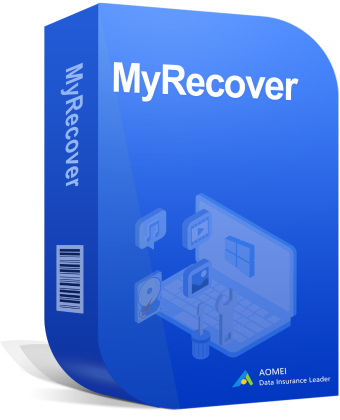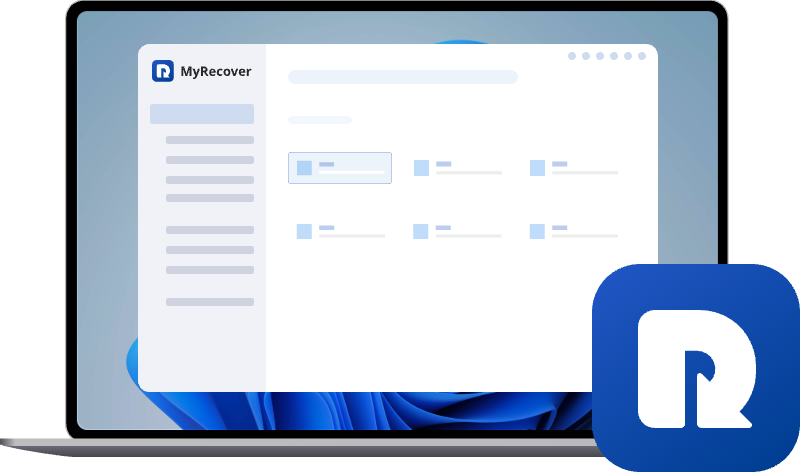How to Recover Missing Files After System Restore on Windows
While system restore can solve some system problems, do you know how to recover missing files after system restore? Whether your files disappeared unexpectedly or were accidentally removed during the restore process, find the solutions you need here.
Lost Files After System Restore!
I recently had a problem with Windows where everything I had previously (files, apps and more) disappeared after restore my system using "System Restore". All of my file lost I did so and I got most of my stuff back except I can't find anything in my images folder. In the Photos folder, they showed up temporarily but then afterwards disappeared and won't come back. What do I do to get them back??
- Question from ChimiChungus
System Restore is a built-in Windows feature that rolls your system back to an earlier point in time, often used to fix errors, crashes, or software conflicts. While it is generally safe, many users are shocked to discover that some files seem to disappear after performing a System Restore.
System Restore is designed to affect system files, registry settings, and installed programs. It does not target personal files like photos, documents, or videos — at least not intentionally. So, it will not delete users' personal files. Of course, system restore also cannot recover deleted personal files.
Why Files Go Missing After System Restore
When some personal files disappear after a system restore, they are usually not truly deleted. Instead, the files become invisible or inaccessible. Here are the main reasons you might lose files after a System Restore:
🧿Software-Associated Files
Some apps (like photo editors or file converters) store created files in their own folders within AppData, Program Files, or other system-related directories. If that program is removed by System Restore, its associated files might also be deleted.
🔔Reset of File Storage Location
If you have ever changed the default path of folders such as Documents or Desktop from C:\Users to another location, system restore may revert it to the default path, causing the files to "seem to disappear".
🔍User Profile Reset
After a system restore, a temporary user profile may be created, with the desktop and all documents appearing empty, and access to files in the original user folder being lost. This leads to the illusion that files are gone, but in reality, they’re just located under a different user path like C:\Users\oldusername or C:\Users\temp.
🔨Files were Deleted Before System Restore
Sometimes, users mistakenly believe that system restore will retrieve deleted personal files — but that's not what it’s designed to do. So, if the files were deleted before the restore point was created, they won't come back.
💡Restore Process Interrupted
Third-party antivirus or disk errors may interrupt the process, causing partial data loss.
How to Recover Missing Files After System Restore
System Restore can be a lifesaver when your system behaves abnormally. When you find that files have disappeared after a system restore, you can use these methods to retrieve the missing files. Whether you have a backup or not, you can find the method you need.
Solution 1. Check the Recycle Bin
If you accidentally deleted files before the system restore without realizing it, you can try checking the Recycle Bin. System Restore does not affect any content in the Recycle Bin.
Step 1. Double click the Recycle Bin icon to open it.
Step 2. Browse through the items and select the files you want to recover once you find them.
Step 3. Right click on them and click "Restore" to return them to their original location.
Solution 2. Check Temporary User Profile
If the desktop is emptied after a System Restore, you should consider that you may have logged into a temporary user profile. In this case, Windows will generate a backup folder C:\Users\oldusername or C:\Users\temp.
Step 1. Open the original user profile and look through the files you want to recover.
Step 2. Copy and pate them to a safe location.
Step 3. Restart your computer and allow Windows to automatically fix the user profile issues.
Solution 3. Restore with File History
File History is a built-in backup feature in Windows 10/11 that periodically saves copies of your personal files. If you have enabled File History on Windows before data loss, you can restore previous versions of files or entire folders.
Step 1. Type "Restore your files with File History" in the Start bar and open it.
Step 2. Locate to the folder where the lost files were stored and choose a desired version based on the backup time.
Step 3. Click the green "Restore" button to retrieve them.
Alternatively, you can restore the ealier version in File Explorer with "Restore previous versions" feature.
Step 1. Open File Explorer and navigate to the folder the lost files were saved in.
Step 2. Right click on it and choose "Restore previous versions" from the context menu.
Step 3. Choose a desired version before the system restore date and click "Restore" to recover it.
Solution 4. Restore from Backup and Restore (Windows 7)
If you previously created a system image or backup using the "Backup and Restore (Windows 7)" utility, it allows you to restore lost files including personal files from the backup. You can follow these steps to retrieve your data.
Step 1. Open "Backup Settings" and select "Go to Backup and Restore (Windows 7)".
Step 2. Click "Select another backup to restore files from" and choose a backup including the lost files.
Step 3. Select files to restore by clicking on "Browse for files/folders".
Step 4. Choose a safe location to save the recovered files and click "Restore" to begin the process.
When the process is completed, the message "Your files have been recovered" will pop up. You can click "View restored files" to check the recovered files in the destination folder.
Solution 5. Windows File Recovery (Command-Line Tool)
If the files were permanently deleted before the System Restore and no backups are available, try the official Windows File Recovery tool from Microsoft. It can scan and recover permanently deleted files from local storage devices like USB drives, SD cards, HDDs. However, it requires basic familiarity with command lines and can only compatible with Windows 10 and 11.
Step 1. Download and install Windows File Recovery on your computer from Microsoft official Channel.
Step 2. Open Windows File Recovery and run it as administrator.
Step 3. Type the following command "Winfr C: D: /extensive" and hit "Enter". Replace the drive letter "D" with your destination drive letter. (System Restore does not affect personal files outside of the C: drive.)
When the process is finished, you can press "y" to check the recovered files in the destination folder.
Solution 6. Recover Files with MyRecover (GUI Tool)
If the files are indeed lost and no backups are available, and Windows File Recovery is quite challenging for beginners, can the files lost after System Restore still be recovered? Of course! MyRecover is specifically designed for this purpose.
It features a simple and intuitive interface that simplifies the data recovery process, allowing even novice users to complete data recovery just by clicking icons. What's more, it doesn't require any backups, and the recovery process operates in read-only mode, so there's no need to worry about data being overwritten at all.

- Supports recovery from HDDs, SSDs, USB drives, and SD cards.
- Compatible with NTFS, FAT32, exFAT, ReFS, and even Ext file systems.
- Allows quick filtering by specific file types for faster targeting.
- Offers both Quick Scan (for recently deletions) and Deep Scan for comprehensive recovery.
- Fully supports all major Windows versions, including 11, 10, 8, 7, and Servers.
Step 1. Download and install MyRecover on your computer from secure channel, avoid installing it on the drive with lost files.
Step 2. Launch it and select a drive where lost data originally were stored to scan, then click "Scan".
Step 3. Choose files you wish to recover from the recoverable lists and click "Recover". You can use the filtering function in the upper right corner to quickly locate the files you want to recover.
Step 4. Select a safe location (not the original one) to save the recovered files.
When the process is finished, the message indicating successful recovery will pop out. You can access and check the recovered files by clicking on the destination folder path or "Browse" button.
How to Undo System Restore on Windows 10/11
If the problem is not resolved after a System Restore or the situation gets worse, you can also undo the System Restore to return the computer to its state before the restore. The undo function is only valid until the next System Restore.
Step 1. Type "Create a restore point" in the Start bar and open it.
Step 2. Under the "System Protection" tab, click "System Restore".
Step 3. Choose "Undo System Restore" and click "Next". If you want to know what items will affected, you can click "Scan for affected programs".
Step 4. Click "Finish" to start the process.
Step 5. When the process is completed, restart your computer to check if the system restore has been undone.
Conclusion
While System Restore mainly targets system settings and not personal data, files can occasionally disappear or become hidden. Whether you have backups or not, you can recover the missing files after System Restore with the solutions mentioned above. Remember to back up important files in advance when making major system changes.
If you're looking for a beginner-friendly yet powerful solution to recover missing files a, MyRecover is definitely worth considering. The Professional edition of MyRecover offers unlimited data recovery quota and supports recover data from unbootable Windows system.


